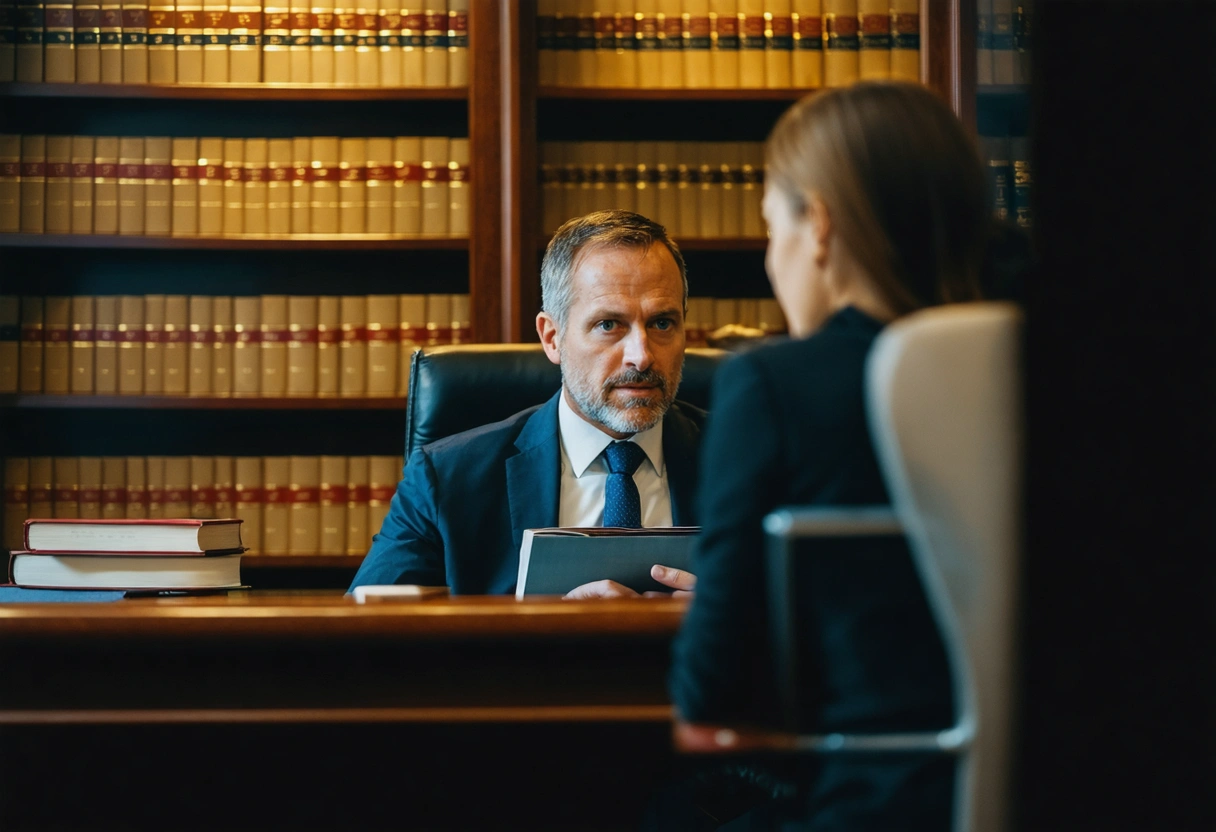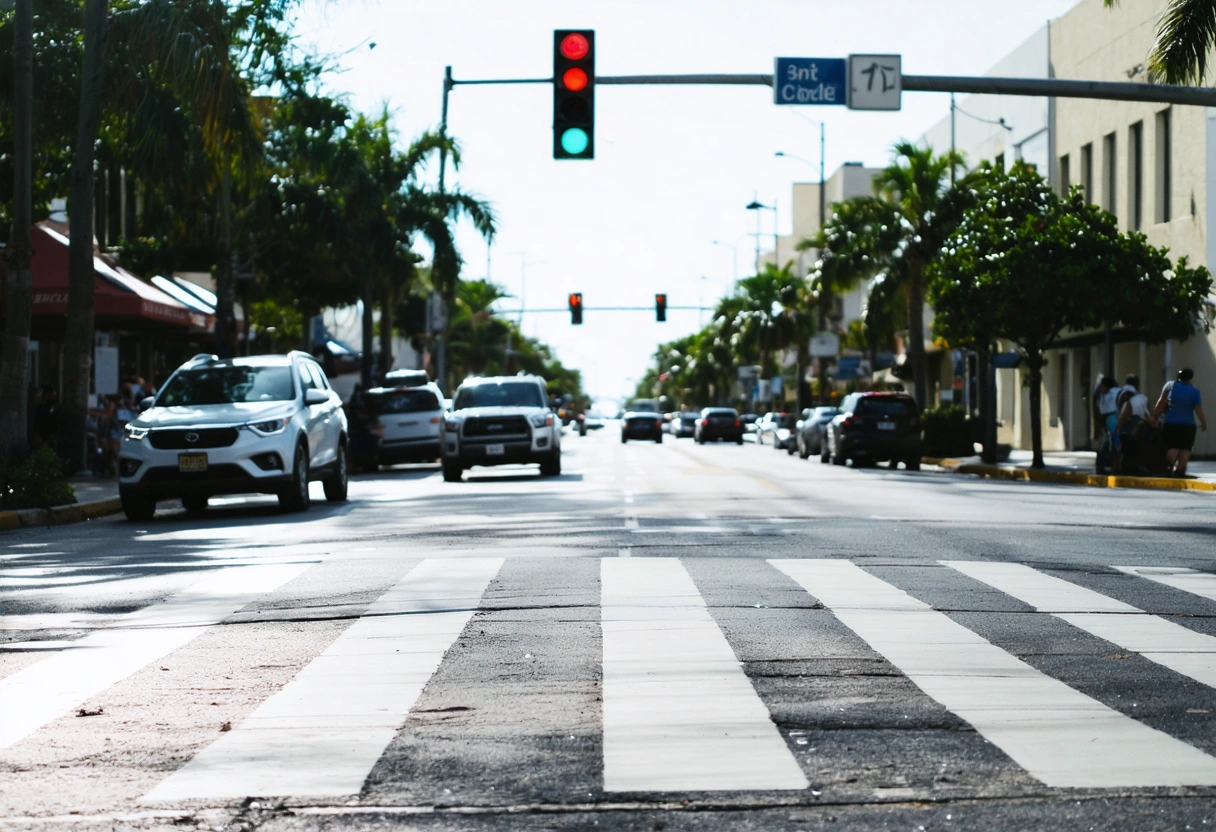Understanding the Complexities of Pedestrian Accidents in Florida
Pedestrian accidents are an unfortunate reality that can have devastating impacts on individuals and families. In Florida, a state known for its bustling cities and beautiful landscapes, pedestrian accidents are, sadly, quite common. Navigating the aftermath of such an incident can be overwhelming, especially when seeking justice. This guide will provide comprehensive insight into the steps you need to take if you find yourself in this challenging situation.
Florida law provides specific protections and avenues for seeking compensation after a pedestrian accident. Understanding these laws and knowing how to proceed can make a significant difference in the outcome of your case. From understanding the legal landscape to knowing what evidence to gather, this article covers the essential steps you need to take.
Immediate Actions Following a Pedestrian Accident
Immediately following a pedestrian accident, your health and safety should be your top priority. If you are able to do so, move to a safe area away from traffic. Call 911 to report the accident and request medical attention, even if your injuries seem minor. Some injuries may not be immediately apparent, and having a medical report will be crucial later on.
While waiting for emergency services, gather as much information as possible. Take photos of the accident scene, your injuries, and any damage to vehicles involved. Collect contact information from witnesses and the driver, including their driver’s license number and insurance details. This information will be invaluable when building your case.
Seeking Medical Attention and Documentation

Even if you feel fine, it is important to seek medical attention as soon as possible after a pedestrian accident. Some injuries, such as internal bleeding or concussions, may not show symptoms immediately but can have serious long-term effects. A thorough medical examination will ensure that all injuries are documented properly.
Medical records serve as crucial evidence in personal injury claims. They provide a detailed account of your injuries and the treatment required, which helps establish the extent of your suffering and the associated costs. Ensure that you follow through with all medical advice and keep detailed records of your treatment and any related expenses.
Understanding Your Legal Rights as a Pedestrian
Florida law is designed to protect pedestrians and holds drivers accountable for negligence. Under Florida’s comparative negligence rule, you can still recover damages even if you were partially at fault. This means that compensation is reduced by your percentage of fault, but you are not barred from recovery.
It’s important to familiarize yourself with Florida’s pedestrian laws and how they may impact your case. For instance, even though pedestrians generally have the right of way, there are specific scenarios where this might not apply. Understanding these nuances can help you better assess your situation and determine the best course of action.
Consulting with a Personal Injury Attorney
Engaging a knowledgeable personal injury attorney can significantly impact the outcome of your case. An experienced lawyer will understand the intricacies of Florida pedestrian laws and will work to protect your rights. They can help you navigate the legal system, negotiate with insurance companies, and represent you in court if necessary.
When selecting an attorney, look for someone with experience in pedestrian accident cases and a track record of successful outcomes. Many personal injury attorneys offer free consultations, which can be an excellent opportunity to discuss your case and understand your options without any financial commitment.

Gathering and Preserving Evidence
Evidence plays a crucial role in pedestrian accident cases. In addition to medical records and eyewitness accounts, other forms of evidence can bolster your claim. Surveillance footage from nearby businesses or traffic cameras can provide an objective view of the accident, while accident reconstruction experts can offer insights into how the incident occurred.
Preserving this evidence is critical. Work closely with your attorney to ensure that all relevant evidence is collected and maintained. This may involve issuing subpoenas for footage or obtaining expert testimonies. The stronger your evidence, the more compelling your case will be.
Dealing with Insurance Companies
After a pedestrian accident, you will likely need to communicate with insurance companies. It is crucial to approach these interactions carefully, as insurance adjusters often aim to minimize payouts. Be cautious about providing recorded statements or signing any documents without your attorney’s guidance.
Your attorney can handle communications with insurance companies on your behalf, ensuring that your rights are protected. They will work to secure a fair settlement that covers your medical expenses, lost wages, and other damages. If a reasonable settlement cannot be reached, your attorney may advise taking the case to court.
Pursuing Compensation and Justice

Seeking compensation is not just about covering your expenses; it’s about holding the responsible party accountable and preventing future negligence. In Florida, you may be entitled to various forms of compensation, including medical bills, rehabilitation costs, lost wages, and pain and suffering.
Your attorney will help you evaluate the full extent of your damages and pursue the maximum compensation available under the law. This process requires meticulous documentation and a strategic approach, especially if your case goes to trial.
Taking Control After a Pedestrian Accident
Dealing with the aftermath of a pedestrian accident in Florida can be challenging, but taking the right steps can help you achieve the justice and compensation you deserve. By understanding your rights, seeking professional legal assistance, and meticulously gathering evidence, you can navigate this difficult time more effectively.
Remember, you are not alone in this process. With the right support and guidance, you can focus on your recovery and rebuilding your life while your legal team works diligently on your behalf. Stay informed, proactive, and resilient, and you will be better positioned to overcome the challenges ahead.
For more detailed information on pedestrian safety and legal rights, visit the National Highway Traffic Safety Administration’s pedestrian safety page. Additionally, consult the Florida Highway Safety and Motor Vehicles website for state-specific regulations and resources.
Being informed about pedestrian safety and legal rights is crucial for all Florida residents, not just those who have experienced an accident. Prevention is key, and understanding the factors that contribute to pedestrian accidents can help you stay vigilant and safe on the roads.
Preventative Measures and Public Awareness

Community education and awareness are vital components in reducing pedestrian accidents. Local governments and organizations often run campaigns to promote pedestrian safety. These initiatives focus on educating both drivers and pedestrians about safe practices. For instance, campaigns may emphasize the importance of using crosswalks, wearing visible clothing at night, and avoiding distractions such as mobile devices while walking.
Drivers, on the other hand, are reminded to stay alert, especially in areas with high pedestrian traffic such as school zones and residential neighborhoods. Public service announcements and community workshops can effectively reduce the incidence of pedestrian accidents by fostering a culture of mutual awareness and respect on the roads.
Community Involvement and Advocacy
Active community involvement can also play a significant role in enhancing pedestrian safety. Residents can advocate for improved infrastructure, such as better lighting, clearer signage, and more pedestrian crossings in high-traffic areas. Engaging with local government officials and attending city council meetings can help push these issues to the forefront of community planning.
Moreover, participating in neighborhood watch programs or community safety boards can provide a platform to address pedestrian safety concerns collectively. Grassroots movements have the power to bring about substantial changes, making streets safer for everyone.
Legal Reforms and Future Directions
Legal reforms are another avenue for improving pedestrian safety. Advocating for stricter penalties for distracted or impaired driving can deter negligent behavior on the roads. Additionally, enhancements to existing traffic laws and regulations can provide more comprehensive protection for pedestrians.

Technology also plays an increasingly important role in pedestrian safety. From smart traffic lights that adapt to pedestrian flow to mobile apps that alert users of nearby vehicles, innovations continue to emerge that could significantly reduce accidents. Supporting the integration of such technologies into everyday infrastructure can further safeguard pedestrians.
Empowering Individuals Through Information
Empowering individuals with knowledge is perhaps the most effective tool in preventing pedestrian accidents. Whether you are a pedestrian or a driver, staying informed about the latest safety practices and legal requirements ensures that you are prepared to act responsibly in any situation.
For parents, teaching children about road safety from a young age instills lifelong habits that can prevent accidents. Schools often incorporate pedestrian safety into their curriculums, but parents should reinforce these lessons at home. Simple practices, such as looking both ways before crossing the street and understanding traffic signals, can make a significant difference in a child’s safety.
A Community Effort Towards Safety
In conclusion, navigating the aftermath of a pedestrian accident in Florida involves a multifaceted approach. While seeking justice and compensation is a critical aspect, fostering a safer environment relies on the collective effort of individuals, communities, and policymakers. By staying informed, advocating for improvements, and supporting legal reforms, we can work towards reducing pedestrian accidents and ensuring safer roads for all.
For additional insights and resources on pedestrian safety, the Pedestrian and Bicycle Information Center offers a wealth of information on best practices and safety tips. Additionally, the Centers for Disease Control and Prevention provides data and recommendations for preventing pedestrian injuries and fatalities.


